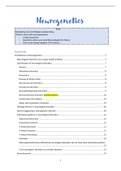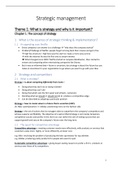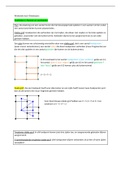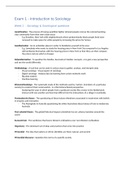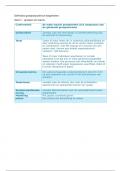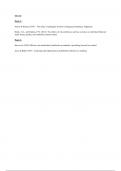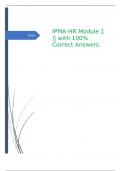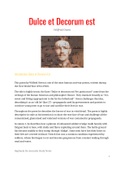Alles paste, zodat het in syntax komt!
Overal notities bovenzetten wat je hebt gedaan en waarom (SPSS: *notitie.) (R:#notitie)
SPSS
Bestand openen & opslaan
Openen --> Data --> Bestand selecteren --> Paste -->
uitvoeren
Opslaan onder andere naam (bijvoorbeeld versie 1.2) -->
Paste --> uitvoeren
Setting hercoderen voor R
Voor R hercoderen in AB (strings aanvinken)
Recode in different variables
1=A, 2=B, enz.
ID aanmaken
Bij elke observant doen
* Voeg een Case indetifier toe.
COMPUTE id=$CASENUM.
FORMAT id (F8.0).
EXECUTE.
Bestanden aan elkaar koppelen
Data --> Merge files --> Add variables
Onder variables koppelen op id, andere variabelen naar excluded zetten
Transporten naar R (exporteren naar excelbestand)
In SPSS: File --> Export --> Excel (save as type: excel) --> paste en uitvoeren
LET OP: Voor exporteren naar R alleen AB fases en codes in bestand zetten
Interbeoordelaarsbetrouwbaarheid aanmaken
Two-way mixed effect model
Zelfde waarnemers beoordelen alle sessies
Analyze --> Scale --> Reliability analysis
Observaties (frequenties) van observanten onder items zetten
Onder statistics
Intraclass correlation coefficient aanklikken
Model: two-way
Type: Absolute agreement
Paste en uitvoeren
Kijken naar gemiddelde beoordeling (intra-klasse)
R
Bestand openen
Data--> import data --> excel file
Plaatje maken data
SCDA --> SCVA
Kiezen welke optie je wil gebruiken
Afbeelding tussendoor steeds opslaan, anders is die weg
, Statistische analyse
Syntax = Script. Hierbij houd je alles bij wat je doet (#notitie)
1 AB design
Gegevens invoeren
File --> New script (hiermee sla je syntax op)
Dit zet je in je Script met notitie
Uitvoeren door te selecteren en ctrl+r te drukken
Ingevoerde gegevens controleren: A1 en B1 apart invullen
Als je niks ziet na het uitvoeren, is het goed gegaan
## Open het ABx-pakket
library(ABx)
## Voer data in
A1 <- c(5,4,6,7,5,6,5,4)
B1 <- c(4,4,3,3,3,2,3,3)
## Maak een lijst van de data
A <- list(A1)
B <- list(B1)
Resultaten bekijken
## Schat het model
ABx1 <- glsAB(A, B)
--> ABx1 mag je zelf kiezen. Als je deze naam dan maar aanpast bij vervolgstappen
## Bekijk de resultaten
summary(ABx1)
Bij het uitvoeren van summary:
Is autocorrelatie significant (P<0.05)?
Nee
Geen rekening houden met
autocorrelatie
Bovenste tabel
Zoals voorbeeld hierboven
Ja
Rekening houden met autocorrelatie
Onderste tabel
Dan kan je kijken naar:
Intercept (a)
Slope (b) --> Regressiecoëfficiënt
Level change (onmiddellijke effect)
Slope change (trendbreuk)
--> In praktijk laatste 2 aller belangrijkste
P-value:
E1= komma 1 plek naar links
E2= komma 2 plekken naar links
E3= komma 3 plekken naar links
Enzovoort

